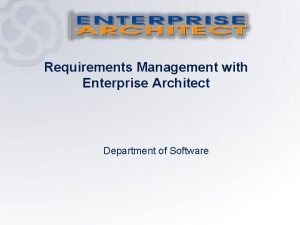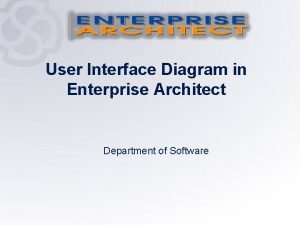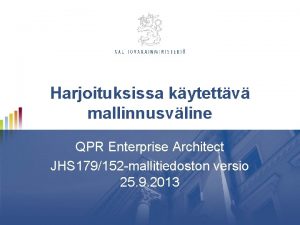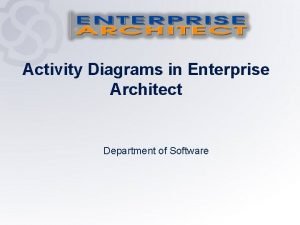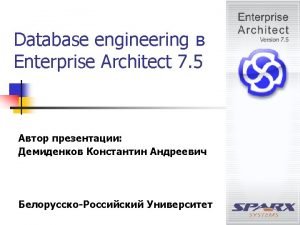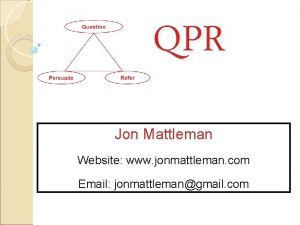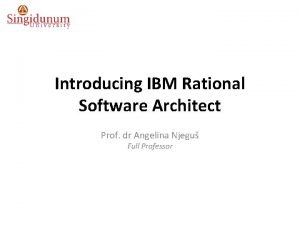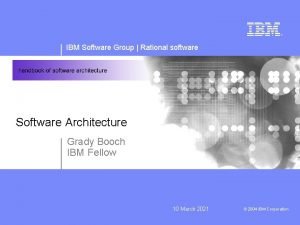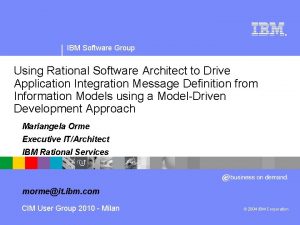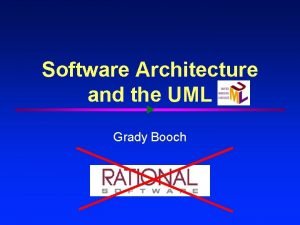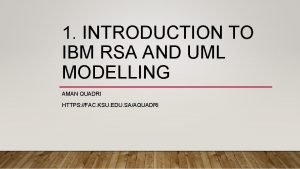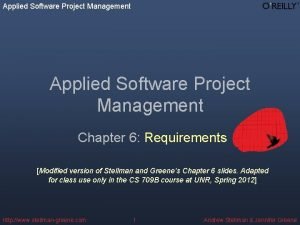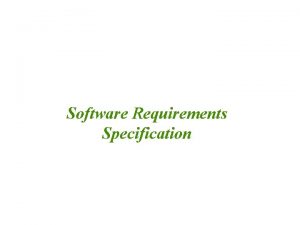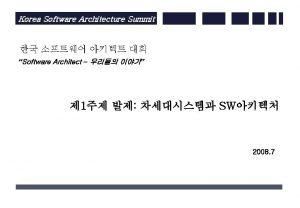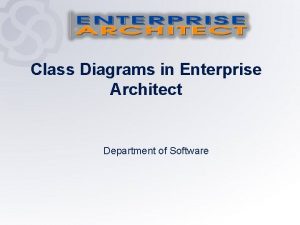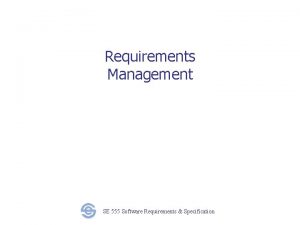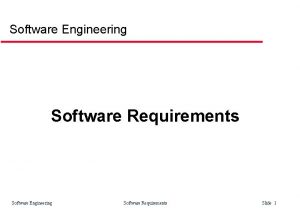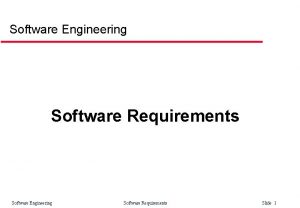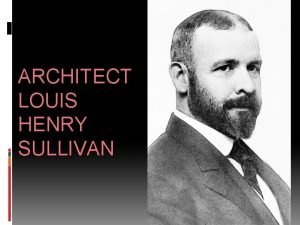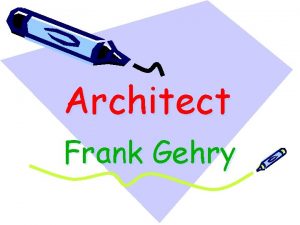Requirements Management with Enterprise Architect Department of Software













- Slides: 13

Requirements Management with Enterprise Architect Department of Software

Requirements Model What are requirements? Requirements are essentially what the system, application or business process is required to do. Requirements are a cornerstone of software development. The management of requirements is one of the more difficult and problematic disciplines in the software development industry.

The most significant reasons for difficulties of Requirements Management are: �� Diverse group input into the requirements �� Volatility of requirements �� Imprecision and ambiguities of natural languages The Enterprise Architect can be used to reduce (and in many circumstances remove) these problems.

Glossary of Terms The following is a list of terms, and how they relate to requirements management and Enterprise Architect: �� Element – A generic term referring to a singular object in a model, e. g requirements, actors. �� Model – A representation of a particular system, such as a business process or a database. �� Diagram – A common way of representing the way in which models and elements interact.

Requirements Modeling for model requirement, we must use the Requirements palette of the Toolbox that is located at the far left of the Enterprise Architect interface, in the Toolbox as shown in the figure 1.


The contents of the toolbox Package: is a namespace as well as an element that can be contained in other Package's namespaces. A Package can own or merge with other Packages, and its elements can be imported into a Package's namespace, (Package imports or merges). Requirement: is a custom element used to capture requirement. A requirement expresses required system behavior. You can connect requirement to other element using realize connector.

Issue: is a structured comment that contains information about defect and issues relating to the system. Change: is a structured comment that contains information about changes requested to the system. Screen: is used to prototype User Interface screen flow. you can build up a solid and detailed understanding of user interface behavior without having to use code. It is display a GUI.

UI Control: represents a user interface control element (such as an edit box). It is used for capturing the components of a screen layout and requirements in a Custom or User Interface diagram. Test Case: Within the Test Case element properties you can define test requirements and constraints, and associate the test with test files. The Test Case element enables you to give greater visibility to tests. Entity: simple element that represents any general thing.

Relationship Types (Connector Types) An Association: implies two model elements have a relationship. An Aggregation: Requirements linked by aggregation relationships form a composition hierarchy. is a type of association that shows that an element contains or is composed of other elements.

A Generalization: is used to indicate inheritance, the generalize implication is that the source inherits the target's characteristics. A Realizes: a source object implements or Realizes its destination object. A Nesting: is express containment or nesting of elements within other elements.

Examples: Draw requirements model for the following: Example 1: Inventory Management System (On line bookstore management) Example 2: User account Management.

Thank You
 Requirements management enterprise architect
Requirements management enterprise architect Interface architecture diagram
Interface architecture diagram Prosessikartta malli
Prosessikartta malli Enterprise architect activity diagram
Enterprise architect activity diagram Enterprise architect subversion
Enterprise architect subversion Enterprise architect import database schema
Enterprise architect import database schema Jon mattleman
Jon mattleman Ibm rational software architect
Ibm rational software architect Rational software architect
Rational software architect Rational software architect
Rational software architect Rational software architect
Rational software architect Rsa uml
Rsa uml Applied software project management
Applied software project management Bad srs document
Bad srs document
